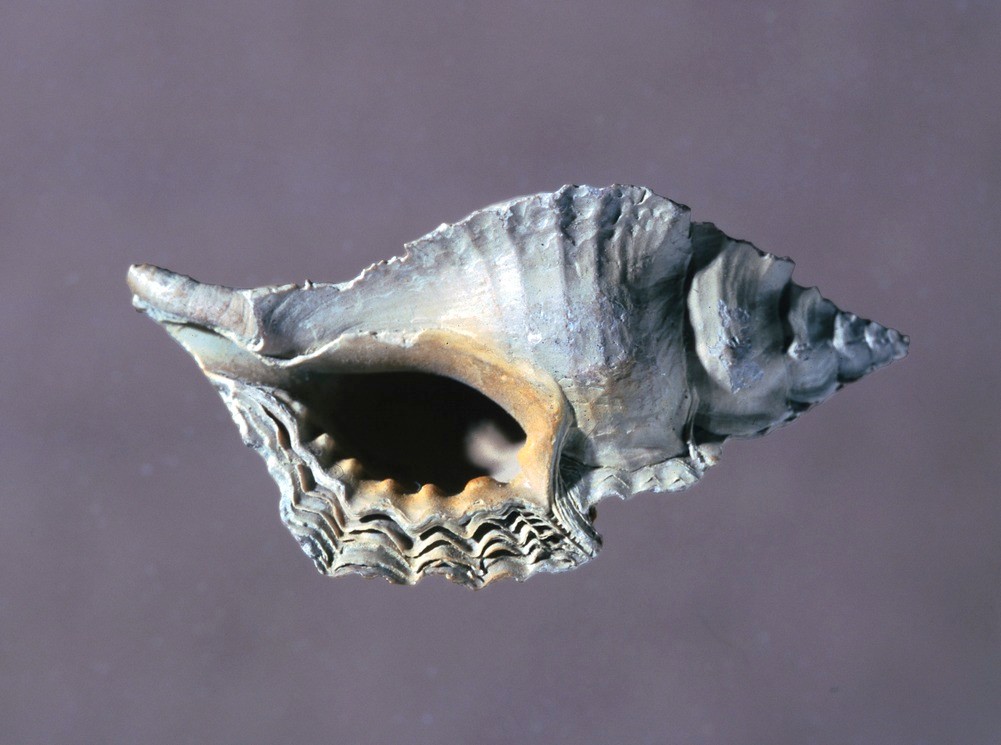| P number: | P550284 |
|---|---|
| Caption: | Hexaplex tripteroides, a gastropod from the Eocene. |
| Description: | Hexaplex is a caenogastropod that originally evolved during the Eocene times (about 33-55 million years ago) and is still alive today. Hexaplex tripteroides was one of the earliest members of the genus, as it is found in Eocene rocks of southern England. Hexaplex tripteroides is a robust, strongly ornamented species with ribs, spiral cords and nodes. It has a long siphonal canal in which the siphon was situated in life (this was a tube-like organ through which water was drawn in to wash over the gills). At the aperture, lamella are built up to form the ribs and varices. Gastropods are molluscs with a muscular foot, eyes, tentacles, and a rasp-like feeding organ (a radula), although only the coiled or conical shell is fossilised. The earliest Cambrian species were marine, but gastropods now colonise fresh water and the land. Classification is based mainly on soft body parts, which are not fossilised, and although there is uncertainty, most fossils appear to fall into one of three groups: 1. Archaeogastropods which have two auricles in the heart, two gills and two kidneys. 2. Caenogastropods which have one gill, auricle and kidney and sometimes a siphon. 3. Pulmonates which have a lung. |
| Photographer: | Unknown |
| Copyright statement: | Unknown |
| Orientation: | Landscape |
| Size: | 359.25 KB; 1001 x 745 pixels; 85 x 63 mm (print at 300 DPI); 265 x 197 mm (screen at 96 DPI); |
| Average Rating: | Not yet rated |
| Categories: | Best of BGS Images/ Fossils |
Reviews
There is currently no feedback

